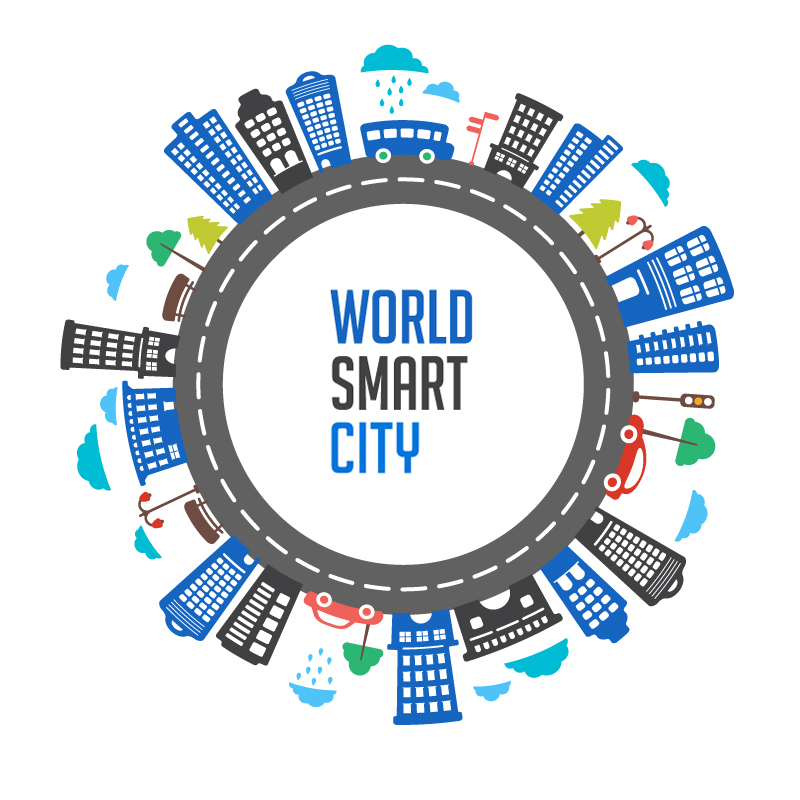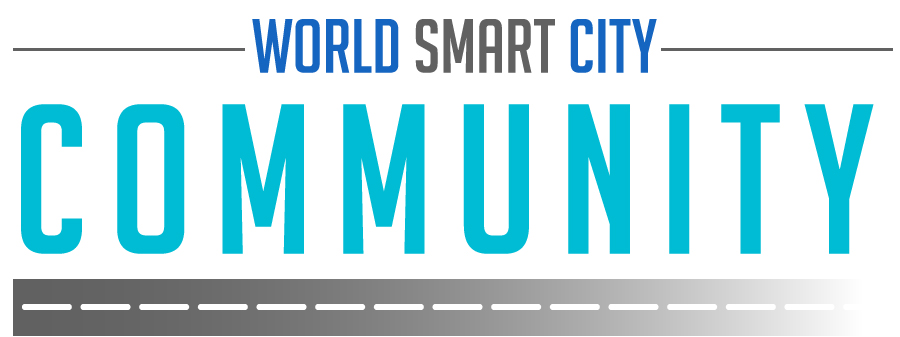Reshaping Mobility: The Factors and Innovations at Play
Digitization continues to plow its way through whole industries, changing such old worlds as retail and finance in ways big and small. In the world of mobility and transport, a number of forces are driving massive shifts in the expectations and the needs of those who run or use our transportation systems: commuters, shippers, and much more.
We’re only just starting to see the outlines and contours of the big changes underway. The shifts now taking shape are being propelled by advances in technology, shifting socioeconomic factors, and public policy.
More than a million people die each year on the world’s roads. According to the U.S. Department of Transportation, there were more than 5 million crashes and 32,000 fatalities on U.S. roads in 2014.
With more than a billion cars on roads worldwide, the near-term goals for connected mobility solutions must include enabling both transport system operators and users to make more informed decisions that reduce travel delays. Congestion causes 5.5 billion hours of travel delay each year, and urban congestion in the U.S. alone costs over $100 billion annually. Drivers in the UK’s top 10 congested cities waste more than 55 hours a year in traffic.
The forces now creating massive change in transportation are many, but a few of the most important are worth discussing here:
Technology is increasing connectivity.
As consumers of information, we have personal electronics and navigation systems, and most of the time we probably have more information about the current status of traffic than the experts in the traffic management centers. Without better visibility, they can’t serve our needs very well. Networks (whether wired or wireless) built to support rail, other mass transit, and some public safety operations, have typically been built around proprietary solutions. Many of them were put in place decades ago, which means that we now must deal with aging and disparate networks that are growing prohibitively expensive to operate and manage. Fragmented communications among multiple networks create gaps in connectivity which, in turn, introduce public safety risks for passengers, first responders, and citizens. It’s widely accepted that improved communications between mass transit, emergency response vehicles, and the existing traffic management infrastructure help to optimize the routing of vehicles, further reducing potential delays.
Socioeconomic forces and urbanization are driving the need for more efficient transportation systems.
Today, we have more people living in cities than in rural areas, which increases traffic and congestion. An aging population forces us to consider mobility issues in terms of elderly access to healthcare and daily services. Global supply chains have disrupted traffic patterns in many countries; as countries go from insourcing to outsourcing and then go from outsourcing to insourcing again, supply chains are continual, dynamically being rerouted. This causes major new influxes of trucking and logistics companies to handle the freight associated with those changes, along with increased traffic congestion.
Passengers are demanding constant Wi-Fi connections to their devices while in transit.
Transportation operators have to do more with less; they need to attract more riders, keep their operating costs down, and potentially rely on new business models. As technology evolves, so must public safety and public security policies. Technology capabilities that were not available just a couple of years ago now require us to have public safety and public security officials upgrade their requirements to meet the opportunities created by emerging technologies.
Lack of interoperability isolates regional systems.
Disparities between regional transportation systems create headaches for travelers and any others who depend on modern transport systems. This is particularly problematic on a continent like Europe, where one can easily drive from country to country, and thereby experience the problems resulting from the deployment of disparate technologies, all lacking interoperability. This causes supply chain disruptions, and it reduces efficiency in logistics. Operating vehicles more efficiently means keeping them in motion, and driving them at maximum performance. Vehicles should not be sitting in congested city traffic, burning fossil fuels.
In order to ensure a smooth transition into an uncertain future any, the leaders of transportation and public safety organizations now believe that it’s become mission-critical to augment their existing radio and limited data networks with video and real-time data solutions. That’s one of the best ways for first responders and operators to have the contextual awareness they need in a variety of incidents, including life-threatening situations, as well as daily operations.
All of the elements that constitute the world of transport and travel are being transformed by the Internet of Things revolution — powered by digitization. Route planning; finding one’s way while in transit; traveling via mass transit, or on foot; collecting fares or tolls; congestion and road pricing; traffic management; video surveillance; choosing amongst different transportation options during any given trip; reducing trips through telecommuting—all of these are evolving at dizzying speed.
Many of the emerging innovations now affecting transportation are giving individuals greater choices as they seek to move around cities. Anthony Foxx, the Obama administration’s Secretary of Transportation, put it this way: “The key word for transportation in the 21st century is ‘choice’ ”. Travelers vary widely in age, amounts of disposable income for travel, abilities to move, degrees of independence, and destinations. How to move a 2-year-old is not the same as how to move a 28-year-old, nor a 38-year-old traveling with children. Adopting a truly new approach to transportation requires providing a much wider variety of choices.
Two of our most innovative leaders, one in transport and one in tech, have laid out the challenge in simple terms:
“Now is the time for us to look at vehicles the same way we look at smart phones, laptops, and tablets; as pieces of a much bigger, richer network.”
– Bill Ford, Executive Chairman, Ford Motor Company
“If transportation technology was moving along as fast as microprocessor technology, then the day after tomorrow I would be able to get in a taxi and be in Tokyo in 30 seconds.”
- W. Daniel Hillis, renowned inventor and engineer: Thinking Machines, Disney, Applied Minds, MIT
The advanced research team at the Gartner Group’s global headquarters had this conclusion to share: “Similar to the way telephones have evolved into smartphones, over the next 10 years automobiles will rapidly become ‘connected vehicles’ that access, consume, and create information and share it with drivers, passengers, public infrastructure, and machines including other cars.”
A true evolution in our thinking is only possible when we come to see vehicles, roadways, trains, stations, airports and shipping ports not simply as modes of transportation. They are nodes in a connected network just like our smartphones, laptops, and tablets. What happens when people, devices, processes and the underlying transportation infrastructure, as a whole, become more interconnected? One outcome is that the systems in place will enable more intelligent communication and decision-making. This evolution toward more holistic and data-driven transportation systems can create greater safety, mobility, and efficiency of existing transportation systems.
“Digital Disruptions in The World of Mobility: We’ve Glimpsed the Possibilities”
The leaders of urban transit authorities and public transport agencies now recognize the need to push simultaneously on several fronts: reduce costs, reduce environmental impact, enhance customer and driver safety, and provide improved passenger services. These leaders are under severe pressure to provide superior passenger services: wi-fi, passenger information systems, and smartphone apps, just to name a few. This means that they must learn to offer a passenger experience that competes with other transportation modes and private transportation companies.
Passenger and driver safety must be enhanced. But the fact is that surveillance video is often wasted because it can’t be accessed in a timely manner, and would take too much labor to analyze. Expensive, limited bandwidth cellular backhaul results in high monthly bills, which is an unfavorable situation for most agencies that are focused on keeping operating costs low and building efficient systems. Faster bulk data transfer is needed when multiple buses are present in the yard, in order to offload video and provide software updates during the short window before buses are turned off. Disparate, purpose-specific radio systems are proliferating, resulting in excess costs, and that situation must also change. These transit agencies are locked into non-interoperable proprietary systems, which limits flexibility to reduce costs and offer best-in-class services.
Emerging technologies are offering solutions to these systemic and operational problems, which begs the question of which emerging applications are likely to be widely adopted. Here’s a short summary of a few such promising and widely applicable technologies:
Forward Collision Warning (FCW)
Forward collision warning applications alert vehicle drivers to a situation that could result in a collision with the rear end of the vehicle in front of them, thus providing an opportunity to avoid or mitigate the collision. This may include vehicles unseen by the driver because they are on the other side of a hill, around a curve or on a street onto which the driver is turning.
Rear Collision Warning
Rear collision warning applications warn the driver of impending accidents caused by vehicles approaching from the rear. Advanced systems may also initiate actions in the vehicle safety systems to mitigate the effects of the collision.
Intersection Collision Warning
In intersection collision warning vehicles receive Basic Safety Messages from vehicles approaching the intersection from all directions and calculate potential collisions to provide a warning to the driver.
Emergency Electronic Brake Lights
In emergency electronic braking a leading vehicle sends immediate notification BSMs in real time to trailing vehicles that it is engaged in emergency braking. Having received this information, the applications in trailing cars warn the driver of emergency braking ahead of them.
Cooperative Intersection Collision Avoidance System - Violations (CICAS-V)
The CICAS-V application in each vehicle detects if the driver is proceeding in a fashion that would cause the vehicle to violate the traffic signal and warns the driver to take action. In addition, the vehicle application will also transmit to warn other vehicles. This application may interact with forward collision warning and intersection collision warning applications.
Curve Speed Warning
Utilizing accurate maps, vehicle location and speed data, and road conditions provided by operators or in real time by leading vehicles; the CSW application provides warnings to drivers when they are traveling at speeds that may be unsafe for an upcoming curve or series of curves.
Virtual Checkpoints
This is one emerging technology that can be implemented on a system-wide level to improve overall efficiency. Virtual checkpoints can be configured on each bus or rail route at distance intervals of a higher granularity than the actual stops; the stops themselves will also be virtual detectors. This technology allows for the prediction of estimated time of arrival (ETA), and this especially useful for mass transit vehicles.
By collecting real-time GPS positions and learning over time about arrival times for various stops, locations, and routes within the transit system, an algorithm will track normal travel times at different points throughout the system and for various levels of ridership. To track this information, virtual checkpoints use information extracted from General Transit Feed Specification (GTFS)[1] feeds and the data being analyzed through the algorithm that is constantly updating against the baseline.
Every time a trolley reaches a virtual checkpoint, the technology will readjust the ETA signs throughout the system, based on any variation in travel time from one checkpoint to the next. Thus the system will constantly self-correct for accurate arrival times, instead of gradually edging further off target with each delay along the line.
Virtual checkpoints can be placed closer together in areas of higher variation, to give the system more chances to re-correct itself in those areas. Other more stable areas, where traffic doesn’t play a part, can have more spacing between virtual checkpoints.
Commitment to Providing Safer and Better Public Transportation
Regardless of the mode of transportation, industry leaders now seem to be committed to improving safety for citizens, passengers, drivers and workers across their own organizations and within the cities of the world.
Safety can be improved with real-time video streaming and monitoring displayed in decentralized locations and in centralized operation centers. This allows for faster incident response times, whether at bus stops, on roadways, on board vehicles, in stations, in maintenance yards, and in depots. This provides better situational awareness to workers and first responders in dangerous or emergency situations.
The convergence of both wired and wireless networks is of particular importance to transportation organizations as they look to consolidate separate communication infrastructures into a single cohesive intelligent network. These new intelligent networks must support high-speed voice, video and data to help speed decision making for greater safety and mobility as well as improved productivity.
Mobility is also imperative in the digitization of transportation. This means giving transit workers more flexibility so they can help passengers and customers while being more accessible and mobile. For example, transit workers can help passengers on platforms and trackside and throughout stations without being confined to a service desk. Better tracking of assets, whether these are the trains or other vehicles for public transit, or cargo being shipped, drives greater mobility as well.
Industry leaders are constantly seeking new ways to streamline and improve operations as global infrastructures evolve to meet the growing demands of transporting more passengers and cargo while reducing the carbon footprint. Reducing vehicle downtime with proactive maintenance and improving collaboration across different agencies while also introducing new business models that can help generate new revenue will continue to be of utmost importance.
Increasing ridership and maintaining their existing customer base is critical for mass transit agencies. By creating new converged IP networks, the same networks used to achieve greater safety, mobility, and efficiency; agencies can also use them to provide value added services to passengers. On-board Wi-Fi and Internet access, as well as a variety of mobile apps that offer better trip planning and wayfinding, provides an enhanced passenger experience. The use of onboard video provides a safer environment that will attract more passengers, including local commuters, tourists, and other travelers.
ASFINAG: A case study in data-driven transit improvements
ASFiNAG is the manager of all of Austrian surface transport systems, and several years back, the company set out to revolutionize the management of the roads, tunnels, and bridges across Austria. ASFiNAG’s challenge was to gain better data on the road, traffic, and weather conditions in order to communicate accurate information to drivers. Delivering more timely, accurate information about traffic conditions to motorists means enhancing the reliability of network infrastructure, whatever the harsh environmental conditions and across whatever systems. To do this, ASFiNAG had to improve network scalability to support new communications applications, whenever and wherever it was needed. Improving traffic flows to reduce congestion would improve safety, with fewer traffic incidents.
ASFINAG’s solution was to connect more than 70,000 sensors and 6,500 traffic cameras over a fiber optic network. Among the positive outcomes from this project ASFINAG lists these:
- In 2015 ASFINAG reduced traffic congestion on its network by 15% compared to 2010.
- Heavy traffic decreased by 3.7%.
- Congestion nationwide decreased by 10%.
- Reduced need for investment through better road utilization and connected roads, drivers, and authorities nationwide while exceeding EU standards for road transport.
According to Bernd Datler, Managing Director of Tolling at ASFiNAG, “we get live feedback on our roads. Using this data, we help route emergency vehicles, provide drivers with up-to-date information and even adjust speed limits to alleviate traffic jams.”
The Future of Connected Mobility
This conversation will continue for many years, and it might well continue in perpetuity. Population growth and urbanization are forcing all varieties of transport and transit systems to adapt – including a modernization of their business models.
The challenge is how to do that smartly. Nearly 3 billion gallons of fuel are wasted in the U.S. each year due to traffic congestion. According to the American Public Transportation Association (APTA), transit systems could collectively reduce carbon dioxide (CO2) emissions by 16.2 million metric tons, per annum, by reducing private vehicle miles. Connected mobility technologies are already providing some with the real-time information they need to make smarter and greener transportation choices.
Cities are taking steps to improve their infrastructure, although most of them are still struggling to overcome the siloed approaches that city departments tend to take. These departments invest in one problem at a time, creating duplication in infrastructure, and losing the value of cross-domain interactions (e.g. public safety and transport with building systems).
This approach is neither scalable nor economical, and it does not benefit from cross-vertical sharing of data and services. For example, congestion management solutions often can’t leverage the video feeds from cameras installed for public safety and security.
Most city departments make investments based on choices that are made somewhat independently of other city departments. This results in less than optimal sharing of infrastructure costs and of resources. These different departments, therefore, don’t benefit as much as they could from a coordinated sharing of on-the-street intelligence and real-time information, including such things as video feeds, data from sensors, etc. Waste and duplication of investment and effort is not a desirable outcome when cities are resource-challenged. Perhaps most importantly, they find it difficult to scale their city infrastructure management.
What are the elements of the city’s new “virtuous circle”? The graphic here helps to explain.
Imagine a common integrated platform that moves cities from siloed services to a situation where each part can share and leverage resources. A key next step for cities is to tap into their common data, especially where and when it’s flowing within shared assets, such as video and management systems.
[1] GTFS is a common format for transportation schedules and associated geographic information


